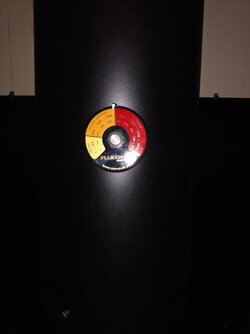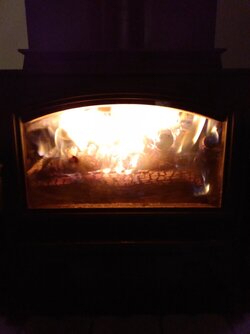So this is what my flue temps are looking like during my overnight burn. It's a mix of way dead heartwood oak, soft maple and some sycamore. It just seems to burn out of control/into the red no matter how quick I shut it down. Is this too hot? It's a condar probe thermometer. It typically isn't a problem during normal day loads but during the evening loads it just rages and I can't slow it down... I don't know if anyone has any tips to avoid the blaze or if all is well burning this close/slightly into the red (I have heard condar probes sometimes read high...)





